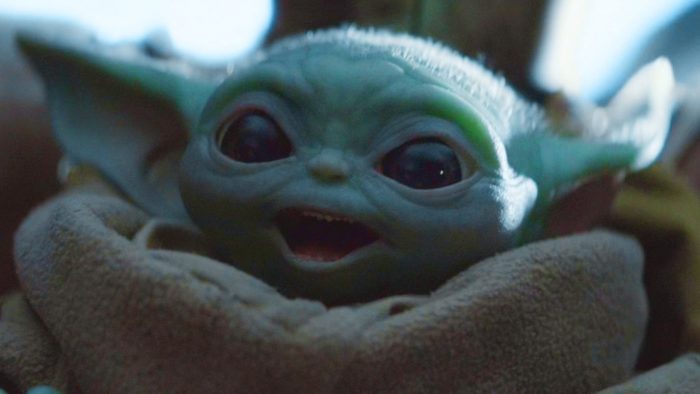Baby Yoda. Baby Yoda. Baby Yoda. Baby Yoda. Baby Yoda.
You know exactly what I mean.
Unless you’ve been living under a rock for the past couple of months, you have heard all about the adorable creature from the Disney/Star Wars series, “The Mandalorian.” Baby Yoda, indeed, is the focus of the Mandalorian character’s protection and the adventures that ensued.
As I watched the series, just itching for the next Baby Yoda-centric scene to happen, I soon realized why I was so obsessed with him. I drew a connection between the little guy and the Inner Child work that has helped me personally heal many of my issues. He, perhaps, was the Inner Child embodiment, spotlighting our instinctive and nurturing responses.
And this, therefore, is the hallmark of Inner Child work.
As an innocent, each of us is worth protecting.
The premise of “The Mandalorian” focuses on protecting Baby Yoda, referred to as “The Child.” Every episode centered on the plans to rescue, hide and protect him. What initially started as a lucrative bounty soon turned into genuine affection and concern for this vulnerable being.
Likewise, we are valuable, vulnerable beings, with or without the tantalizing bounties on our heads.
Inner Child workbooks and therapy processes often encourage us to revisit our various child stages: infant, toddler, young child, grade school age, adolescent.
For the Inner Child work, starting with the infancy phase, we participate in exercises that involve relating to baby pictures of ourselves. We also are encouraged to engage in sensory experiences, like drinking apple juice from a baby bottle and cuddling a stuffed animal. The point in doing these things is to recognize how, many times, we were not protected properly by our caretakers. This was jarring to our young infant selves; it can be equally jarring for us, as the adults we are now.
We are confronted with the very real need to be protected. Many of us, coming from abuse and dysfunction, have a hard time accepting that reality. We view it as weak or shameful.
Yet, if we consider Baby Yoda, I don’t think anyone is judging that “foundling,” as the series sometimes calls him, with the same degree of harshness. Of course, Baby Yoda needs to be protected. He’s vulnerable. He cannot make it completely on his own.
Neither can we.
So, if the baby pictures and baby bottles and Inner Child exercises fail us, let’s try Baby Yoda. Superimpose him where our vulnerable inner child selves would be.
It’s okay to be curious.
Enter toddlerhood.
Episode 3, “The Sin,” of “The Mandalorian” depicts Baby Yoda’s curiosity. As part of the rescue/protection attempt, he is kept close by, in the series’ spaceship.
Indeed, within that cockpit, little Baby Yoda starts exploring. He flicks the buttons on the instrument panel. At one point, the Mandalorian chastises him, “Stop touching things.”
And, like any good toddler, testing limits, we see him slowly reaching for a button, while maintaining eye contact with his guardian/protector. Once that happened, the Mandalorian simply picks “The Child” up and places him on his lap.
Within that seated position, Baby Yoda discovers the silver ball attached to the gear shift. He grasps it, believing it to be his toy. It is ALL about discovery, reaching out, seeking, touching, grabbing things, exploring his universe (no pun intended, given the Star Wars’ context of things).
Baby Yoda’s connection to the Inner Child, here, emphasizes our lifelong need for autonomy, for curiosity and exploration. It really kicks off during toddlerhood. We hear countless stories of “the terrible two’s,” of little ones who flush a watch or a phone down the toilet, of loud power struggles with the defiant, “No!” being yelled at anyone who dares to go against the small person’s world view.
Inner Child work, therefore, has us return to that discovery-laden era of our lives. We go back to what it was like to be that curious two-year-old, discovering and yearning to be a separate individual.
What was the response we received from our adult parents and guardians when it involved our discovery process? How did they handle our “no?”
Was that response fear? Punishment? Being stifled? Being controlled?
Were we encouraged and cheered for our independence?
Were we “made wrong” for wanting to explore?
Whatever those answers were, the truth remains the same: curiosity and exploration are a normal, necessary and healthy part of any human being’s development. Each person is to be their own individual.
This process often can get its start in toddlerhood, but, again, it continues, lifelong. It can be wonderful if we are given permission to access that. However, many of us, as small children, weren’t.
But, now, as the adults we are, let’s give ourselves that permission. It’s okay.
Learn from the Baby Yoda character.
Individuate. Reach for those buttons. Learn.
You deserve to grow.
We deserve play.
Episode 4, “Sanctuary,” of the series, indeed, finds our Baby Yoda seeking refuge on a planet which seems safe. Inhabiting this planet are a bunch of kids, all of whom squeal with delight at our adorable little guy. One girl, asks, “Can I play with him?” The Mandalorian grants permission, and, before you know it, Baby Yoda is surrounded by laughing children, and is amused by the flopping electric blue alien fish on the ground.
Concerning the scene, one parent notes, “He’s very happy here. Fits right in.”
As part of Inner Child therapy, eventually, we encounter the grade school stage of ourselves.
We learn about school, making friendships and how to negotiate the play, via games, parties and playgrounds. In order to grow as healthy individuals, it is our job to play.
Ideally, our experiences with play and everything surrounding it, would be in the same welcoming fashion as that of Baby Yoda. Opened arms. Enthusiasm. Joy.
Maybe even, flopping electric blue alien fish.
However, many of us have that innocent play disrupted and corrupted. Some of us come from abusive homes, in which we had to mature much faster than we were supposed to. Some of us had something about us which made us “different.” And, because of that, we were rejected and bullied. Some of us were given a painful education about play. We were told we were wrong, lazy, stupid and worthless for wanting it.
That’s tough enough to face as a child. However, we continue to carry those painful lessons into our adulthood.
Baby Yoda reminds us to play. There’s no overthinking, no judgment, no shame.
True, our lives are more complicated than that fictional character’s. Even though we grow up, there is an Inner Child in us, always needing to play.
Be like Baby Yoda. Heed that call.
It’s wrong for us to be abused- in any way.
In Episode 8, “Redemption,” our little guy is abducted by two Storm Troopers, on assignment from the evil Imperial villain. At one point, they stop, and, when Baby Yoda stirs within the knapsack, one of the Storm Troopers punches him… twice. He wants the “assignment” to keep still and quiet.
The internet exploded with rage once that episode aired.
Indeed, actor/comedian, Jason Sudeikis, who voiced the punching Storm Trooper, received a viral hate backlash. Fans had a meltdown. Besides targeting Sudeikis, I saw memes on social media, declaring stuff like, “I love Disney, but if anyone hurts Baby Yoda, I will burn down Disneyland!”
So, yeah, there was a strong reaction.
Many of us are brought to Inner Child therapy and exercises because we’ve been abused. We’ve been hurt physically, emotionally and mentally. We’ve been bullied and neglected. We’ve been punched in our personal development and psyches.
And, unfortunately, most of us do not possess the spirited, championing responses from others that Baby Yoda received from the internet. We feel alone, isolated and helpless. It seems that, through the silence and lack of response, the abuse hurled at us was, therefore, acceptable. We learn, unfortunately, yet another heartbreaking, harmful and wrong lesson.
Abuse is wrong, evil and vile, in any era of the Inner Child, in any era of our lives. It’s violence against our humanity and personal dignity.
If no one rescued you, protected you or believed you, against any of the abuse you experienced, at any phase of your life, please know that should never have happened. You didn’t deserve the mistreatment. There was never anything that warranted that behavior against you.
Baby Yoda is an excellent teacher of those truths. Please allow him to mentor you now.
It IS wrong for us to be abused- in any way.
We are worthwhile, even in the uncertainty of life.
Episode 8 leaves us with the Mandalorian, after triumphing against foes and threats, assuming the ongoing responsibility and care of Baby Yoda. We are left wondering what future adventures will ensue.
What are the obstacles, successes, failures, gains and losses for “The Child?”
Answer? We don’t know. Just like life.
Nevertheless, we are valuable, worthwhile, even in the uncertainty.
Just like Baby Yoda.
We are innocent, capable of gentleness, joy, strength and wonder, just like this Star Wars’ character.
Perhaps, we are drawn to him, not just because of his cute face, but because he IS us.
Baby Yoda, “The Child,” can be the embodiment of our Inner Child selves… if we allow it.
Copyright © 2020 by Sheryle Cruse












Read 0 comments and reply